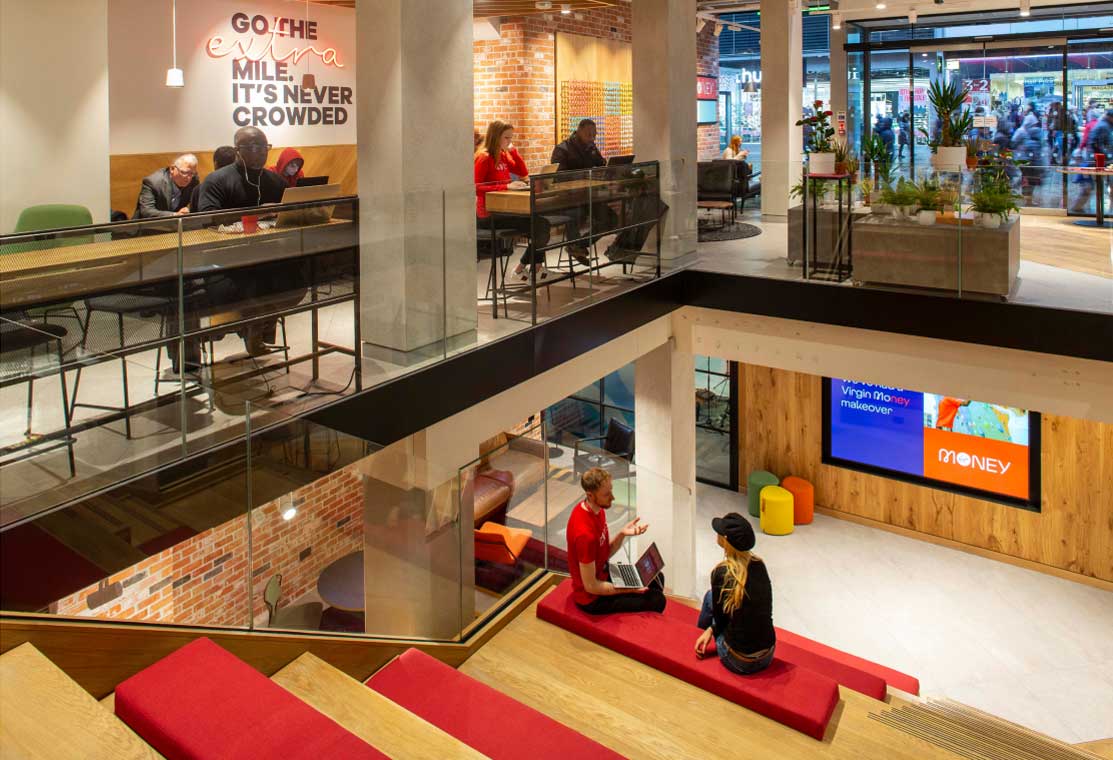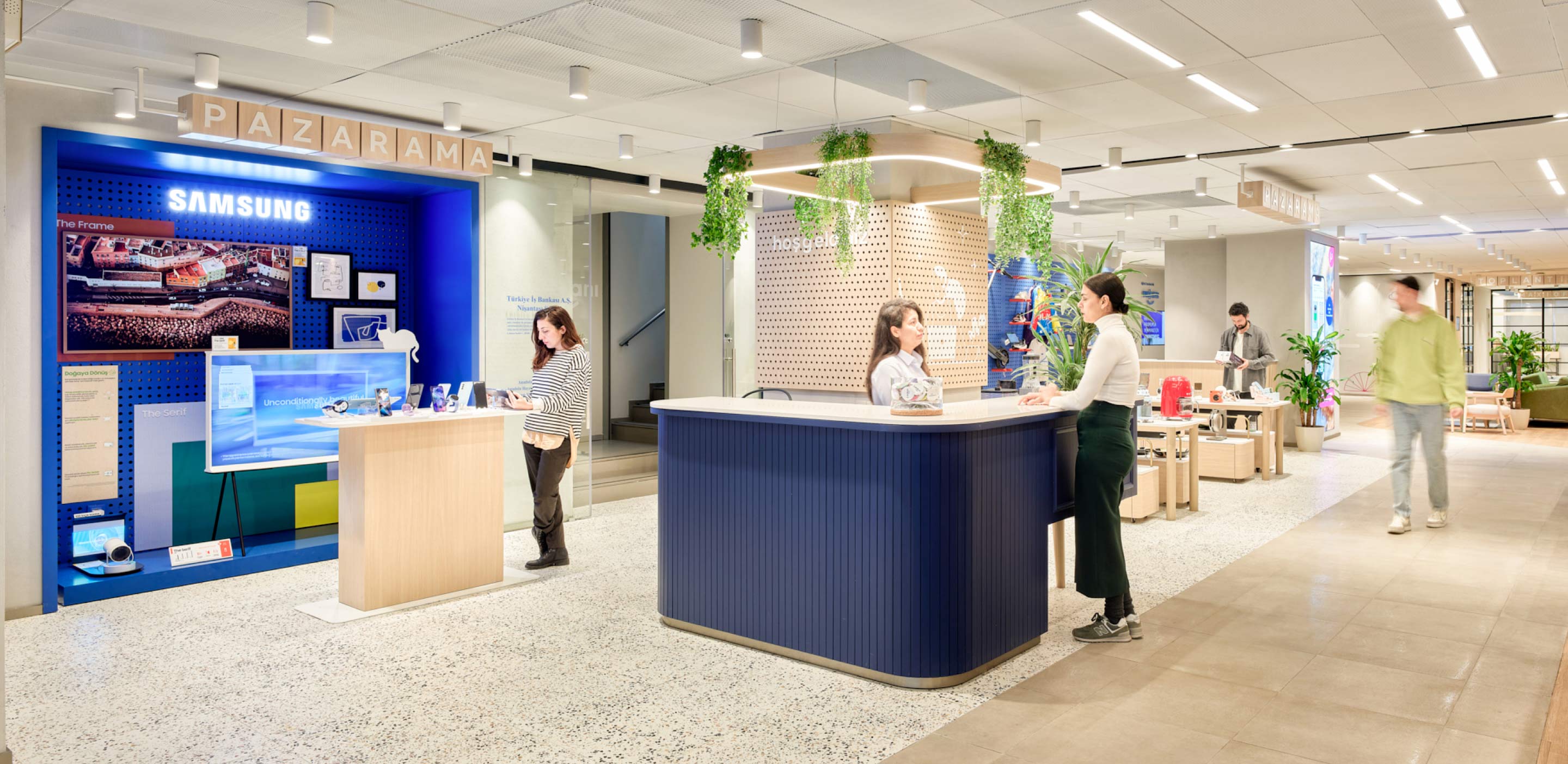Less than 10 mins
Solving Banking’s Identity Crisis

Banks across the world are at a critical moment.
On one level the sector is booming. As McKinsey notes in its 2024 Banking Report: “The past two years have been the best for banking since before the global financial of 2007–09, with healthy profitability, capital, and liquidity.”
With more than a $1 trillion total profit a year, banking is the world’s most profitable sector. So, what do they have to be worried about?
In simple terms, much of that recent success is a factor of high interest rates, and with rates falling across the world, banks will in the next 12 months need to address fundamental issues of who they are, who they’re for, and the value they bring.
This identity crisis has been building for some time, as the digital revolution calls into question the branch network that’s underpinned retail banking for decades, trust erodes in institutions across society including established banks, and a new generation of challenger banks have emerged.
Fundamentally banks need to find a way to reconcile people’s need for efficient day-to-day banking with their need for more profound financial services which require relationships based on trust.
Getting this right is not easy, but we believe it can be done, and furthermore that it presents a significant opportunity. Banks can recast themselves as providers of financial support so that people can live the lives they want, find ways to play a role in new parts of customers’ lives, and remain relevant as people’s priorities change through their lives.
It’s a critical moment for banks, and here’s how we believe they should approach it.
Surface and deep banking
Firstly, understand that while in some ways what people want from banks has changed hugely, in many ways it hasn’t.
The original purpose of banks was to provide communities, individuals and business with financial advice, support, solutions and service to help meet life’s challenges and achieve positive goals. This hasn’t changed. It’s what people still want and need from them.
However, there is a duality in the different types of the support customers need, which affects how frequently, where and how it’s offered. Years of our own direct research with banks’ target customers, consistently yields two rather different roles they should play in peoples’ lives. They are totally different ‘categories’ of requirement & provision, yet one is historically co-dependent on the other.
These two categories are:
A. Surface banking – basic (but still critical) banking service. We think of this need as ‘Lower Order’ money support. Functional, transactional ‘lighter’ money management.
B. Deep banking – ‘Higher Order’ financial life support. Advising customers on the right financial solutions for the very important, ‘heavier’ areas of what they need to be stable, plan for and achieve the key anchor points in their lives and futures.
Digitisation has transformed how we access these. Prior to ‘remote’ (phone and digital), people needed access to local face to face contact, and were happy enough to combine their ‘surface banking’ interactions with their ‘deep banking’ conversations, physical networks of local branches being the only possible interface. A teller booth basic transaction often led to a sit-down chat about more complex support. This worked for many years, mainly because it had to – there was no alternative – both banks and customers had to ‘populate’ and run this model. As a result, branches have been historically the primary, dominant channel to market, and you’ll be hard pressed to find a well-established bank without a significant ‘legacy’ network of them.
As we know, the rise of digital has disrupted this model: all customers now want from surface banking is ultra-convenience, ease and elegance of use, on their terms and fully digital-first.
The result has been banks around the world de-investing in their branches and contracting physical networks in favour of building & enhancing digital remote channels. This works for surface banking but is damaging the ability of those banks to deliver the more profitable deep banking.
There are issues from a commercial sales point of view, and from a brand perception angle.
Dwindling sales opportunities
The mistake banks are making in becoming overly reliant on digital/remote while massively reducing their physical touchpoints, is that when it comes to customer encounter traffic, the value is not in the volume.
80% of the value comes from 20% of the footfall / contact with customers – it’s to be found in the ‘Deep Banking’ below-the-surface more complex needs that customers have, and the solutions to these needs banks can offer.
In the ‘old’ branch model, a great branch team member was able to proactively discover and tap into a deep banking need/opportunity from a customer’s surface banking visit. By closing branches, banks are gradually cutting themselves off from these sales opportunities
To give just one measure, according to proprietary research from Finalta, branches in North America accounted for 72% of newly acquired current accounts in 2023; 56% in Europe and 55% in Asia–Pacific.
At the same time our research screams that customers of all generations still prefer in-person, face to face conversations, guidance and advice for their complex life-support needs, which are often ‘latent’.
In theory deep banking guidance can be given out of branch using tech, but customers still prefer in-person contact, and more importantly this relies in the main on those customers deciding to set up the necessary appointment and digital admin. Access therefore to latent value, for banks, greatly diminishes when the in-branch ‘ad-hoc’ moments to discover it, disappear.
Therefore this reveals a paradox: Customers don’t need branches, but they want them. Banks don’t want branches, but they need them.
This issue is compounded by a brand challenge.
Most people experience banks as the basic transactions. This makes it hard for banks not to be seen as a functional ‘means to an end’ at best; a necessary evil at worst. In this shallower context money is a ‘utility’ really, and utility providers have always struggled to connect emotionally with customers. Who really cares about their water, energy or car maintenance provider?
Yet if we’re going to trust them with our deeper banking needs banks need to connect emotionally with us.
So, how can banks create not only opportunities for those deeper and more valuable conversations with customers, but also the trust and relationship that will make customers willing to engage in those conversations?
It’s not easy, but it’s worth the commitment. And we have some ideas…
Turning problems into opportunities
Despite the challenges described, we believe it is possible to become a trusted, valued and yes, even loved, banking brand. even while ‘migrating’ the surface banking stuff away from direct human contact.
It will take effort, investment and vision. We are after all talking about moving beyond a banking model that’s been established for decades. But it has the potential to be more powerful than any promise banks can make in a brilliant ad. The ones that can make this leap, will stop losing customers to new fintech or remote-only players, losing latent sales due to reduced face to face contact opportunities, and losing business through an apathetic, brand-disengaged customer base not motivated to manage their finances more actively.
They need to find new ways to get their true stories across, to engage customers in what they actually do, and so to inspire and stimulate their customers to talk to them about and trust them with their life plans.
At the heart of this is to get beyond the screen of what banking seems to be, to what the true potential life-value of it can be.
The way we at I-AM approach this challenge, combines active work to understand customers’ lives and creative inspiration techniques to stimulate ideas and new concepts, based on a holistic view of human life today.
From insight to action
It begins with direct research work. This uses a unique combination of methods and is designed to get an understanding of not only how people feel about and connect with banking today, but also how they might embrace new ideas and concepts.
We start with customer persona profiling - to agree with our clients, often based on categorisation models they might use, for instance, for product targeting, detailed and relatable 'portraits' of their key target customers.
Rather than the traditional customer personas based on demographics like age and income brackets, we use psychographic personas built from attitudes, values, motivations and lifestyle – these are a far more telling indicator of what people might do as opposed to what they currently do.
Then we work with specialist researchers around the world who conduct qualitative discussions using stimulus material and questions designed to open the conversation about possibilities for future innovation and design. The insights that emerge from these are cross-referenced with quantitative surveys against large groups to ensure the reliability of those insights at scale.
The next step is to blend these direct insights with broader life and sector trends, framing the 'voice of the customer' within a wider context of developing directions in the financial world. The output is a report detailing usable insights and possible creative routes to build on them.
In this way, our creative work is grounded in what we’ve learnt from people. It’s what we mean by our agency strapline 'People Inspired Experiences'.
Insight is not enough alone. We go beyond this with workshops that aim to help our clients see possibilities, extract valuable insights from customer studies, and align on structured building blocks for the right 'brand experience formula'. In the often dry, rational, and unemotional world of banking, we have found that exciting inspiration can be created using our unique Life Map as part of such workshops.
The Life Map shifts attention away from the obvious areas of engaging such the bank’s own products and services, and towards a customer's complete life. That’s where ideas and innovation thinking can happen. We can find new possibilities for meeting people where they are in their lives, building dialogue around what they’re doing and want to do, rather than in the products we want them to buy.
This approach delivers significant commercial value. Just look at what we did with B Works and IsMekan.

B Works
Virgin Money asked us to take its B Works concept to Manchester, and the project showed just what can be achieved when a bank rethinks how it engages with its customers.
We created an exciting, flexible space that consumers are able to engage with for many differing reasons, whilst also receiving professional advice on their finances. From casual use, to designated co-working, and even complete privacy if required, the space is a total reimagining of what a bank branch looks like.
Opening in January 2019, it outperformed every other branch in the group with sales more than 300% higher than the next best performing branch. As a result, the concept was rolled out to the other 66 branches over the following three years.
B Works led the way in rethinking the role of a bank branch in our lives. B isn’t just a bank, it’s also a destination where consumers can come to feel fully supported in both their private banking and business interests.

IsMekan
İş Bank, the first national bank in Turkey, needed to find ways to bring customers back to its branches. They had the customers, but their relationships with them were mainly digital, and the bank was keen to reinvigorate those all-important in-person connections.
We designed a space that people want to visit. From community events, to spaces for work, to a physical manifestation of their online marketplace Pazarama, and a cafe corner to catch up with friends over good coffee, this was an entirely new way to look at a bank branch.
Mekan in Turkish refers to an open and welcoming experience for social gatherings as well as for time spent in solitude away from home, so it made perfect sense for this new concept to be called IsMekan.
